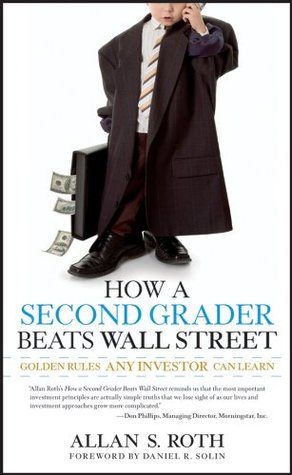Kindle Notes & Highlights
Read between
February 6 - February 19, 2021
Successful use of this book means increasing your returns by 3 to 4 percent annually. This may not sound like much, but each 1 percent may, on average, move your financial goals up by four years (much more on this in Chapter 13). We are talking about giving you 12 to 16 years of your life to pursue whatever it is that makes you happy.
Embracing the simple second-grader wisdom will shield you from the “helpers” that I call Wall Street that merely want to transfer your wealth to them. And by Wall Street, I mean everybody who’s after your money, not just the large brokerage houses. I’ve seen many independent planners, insurance companies, and mutual fund companies do things that make me cringe. They all share one thing in common: They fail to pass a simple smell test from a second grader.
John Allen Paulos, in his book, A Mathematician Plays the Stock Market, reveals the highest correlation ever found to the S&P 500: It was the amount of butter produced in the country of Bangladesh. Apparently, between 1983 and 1993, when butter production was up 1 percent, the S&P 500 was up 2 percent the next year. Conversely, if butter production was down 10 percent, you could predict the S&P 500 would be down 20 percent.
Some investors won’t go with broad indexing because we know it has zero chance of outperforming the market. If we framed the decision that indexing must beat the average return of a dollar invested, we are far more likely to invest in the broad index.
We are happier with our stockbroker when she gets a 15 percent return in a year when the market earned 20 percent than we are when she loses 5 percent in a year when the market lost 10 percent.
We don’t mind paying someone 1 to 2 percent to manage our money because these are small numbers and we don’t act...
This highlight has been truncated due to consecutive passage length restrictions.
Mental accounting is how we trick ourselves into believing that we are doing better than we actually are. Just like the two out of three gamblers in Las Vegas, we tend to remember our brilliant investments and forget our what-were-we-thinking ones. That’s because remembering our winners gives us pleasure and forgetting our losers stops the pain.
Once we make an important decision, we like to feel good about it. We have a tendency to carefully review any information that supports our decision and dismiss any new information that leads us to believe we may have made the wrong choice.
We all act silly with our money, and that includes me, as well. If you want to find the investors most prone to these human investing biases, that’s easy. They are the ones who are bragging about their investment performance and don’t know they are acting silly with their nest eggs.
Let’s take one last peek at the Monte Carlo simulation. We won’t penalize the active portfolio for taxes, as we will give it the benefit of the doubt that no one would be silly enough to do active investing in a taxable account. Let’s just say that the active investor acts with human nature and pays the 1.5 percent penalty. So, now the average dollar invested has a 3.5 percent drag comprised of 2.0 percent expenses and 1.5 percent penalty for chasing performance. Running this in the Monte Carlo simulation against Kevin’s 0.23 percent fees, while he watches SpongeBob, creates the odds listed in
...more
Faulty argument #1: You don’t need international stocks, because American multinational companies have a large percentage of their operations overseas. This gives you enough international exposure. To see the flaw in this logic is easy. During the five years between 2003 and 2007, the U.S. stock market earned a handsome 91
percent return, but international stocks returned 187 percent. The very fact that the returns differentials could be this large between U.S. and international stocks shows that you don’t get enough international exposure by just buying U.S. stocks. Faulty argument #2: One should overweight international stocks, because most of the world’s economic growth will come from overseas. I certainly agree with this argument, but that does not translate into international stocks outpacing U.S. stocks. That’s because it’s not exactly a secret that countries like China and India are growing faster than
...more
You want both your fastest-growing and most tax-efficient investments outside of your IRA account.
The argument to stay away from tax-deferred investing is usually pitched by some of the, how should I put this, questionable “financial planners” out there and is very self-serving. If you don’t invest in your 401(k), the planner can sell you another product that he can make money on. Can you say “permanent insurance”?
Don’t play a loser’s game by paying money for one expert to outsmart another expert. In investing, you actually get what you don’t pay for. As Albert Einstein put it, “Sometimes one pays most for the things one gets for nothing.”
Learn about the subject of behavioral finance. Jason Zweig’s book, Your Money and Your Brain (Simon & Schuster, 2007), will teach you to be a better investor. The logical side of your brain may recognize the street signs of simplicity, but the emotional side will surely steer you off course, or off a cliff. Unfortunately, it’s hard to know which side of your brain is in the driver’s seat when you are making a decision.


